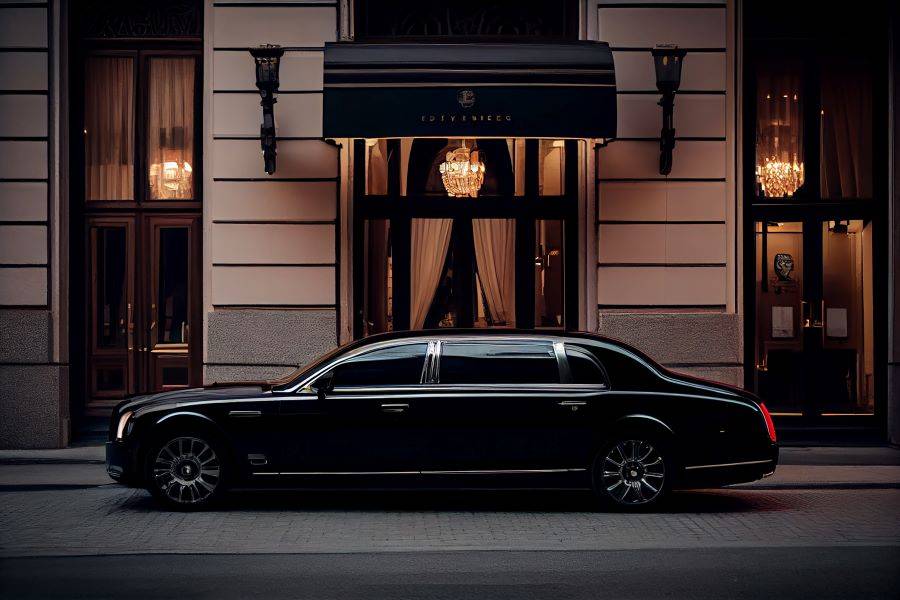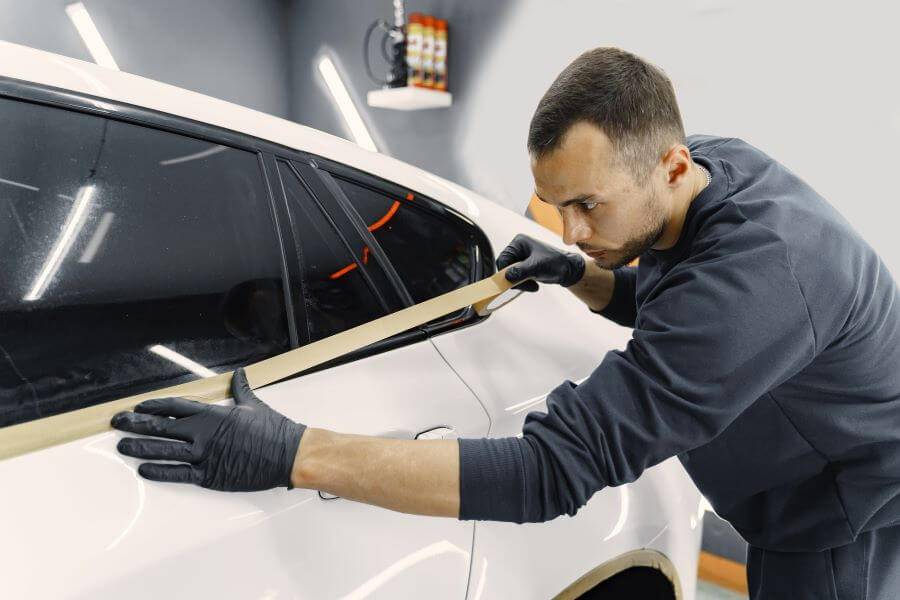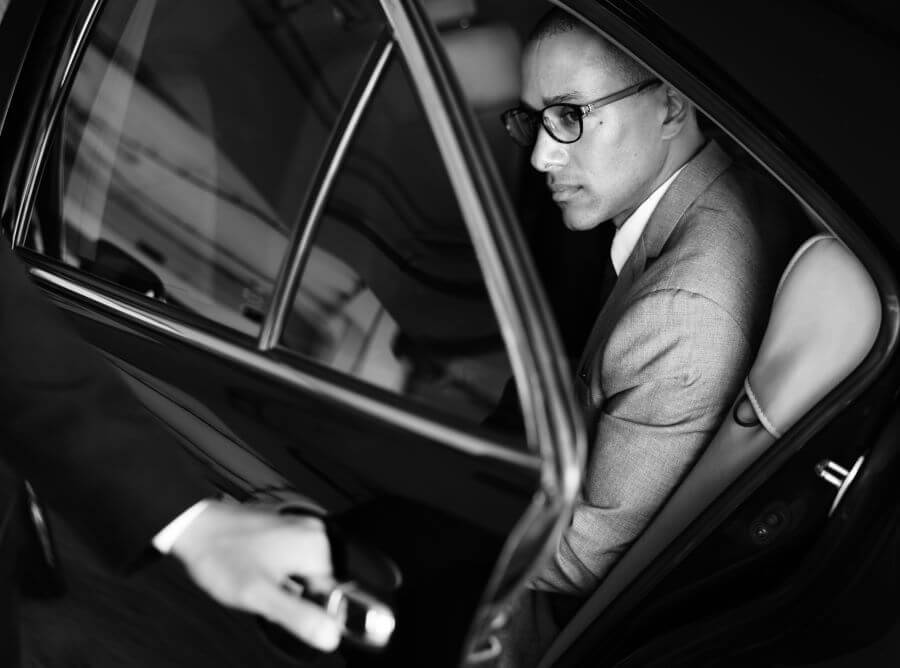Uber’s rise as a global ride-hailing service has transformed people’s commutes, offering an easy, convenient, and affordable alternative to traditional taxi services.

As part of the Uber platform, drivers use their vehicles to provide rides to passengers. This leads to various questions about the specifics of vehicle customization. One such question often arises is whether Uber cars can have tinted windows.
While this may seem like a simple yes or no question, the answer requires an in-depth exploration due to factors such as varying regional regulations, safety implications, privacy concerns, driver and passenger preferences, and the overall impact on the ride experience.
Let’s delve into a comprehensive analysis of these aspects.
Contents
Window Tinting: A Detailed Overview
Window tinting refers to applying a thin laminate film to the glass surfaces of a vehicle, thus darkening them. This practice is common in automotive customization, prompting vehicle owners to opt for it for several reasons.
1. Heat Reduction:
Tinted windows can significantly reduce the heat inside the car by blocking sunlight. This can make rides more comfortable, especially in hot weather conditions, and reduce the vehicle’s air conditioning system load.
2. Glare Reduction:
The glare from the sun or high-beam headlights from oncoming vehicles can significantly distract while driving. Tinted windows help reduce this glare, providing a safer and more comfortable driving experience.

3. Privacy Enhancement:
Tinted windows can deter prying eyes, offering a degree of privacy to the vehicle’s occupants. This can be particularly appealing to passengers who prefer keeping a low profile.
4. UV Radiation Protection:
High-quality window tints can block up to 99% of harmful UV rays, protecting the vehicle’s occupants and preventing the vehicle’s interior from fading over time.
5. Aesthetic Appeal:
Many vehicle owners find that tinted windows enhance the aesthetic appeal of their cars, giving them a sleek, stylish look.
Despite these benefits, window tinting has its share of criticisms and controversies. Some concerns tinted windows can hinder visibility, especially during nighttime or in poor-visibility weather conditions, posing safety risks.
Furthermore, tinted windows can hide illegal activities, making it difficult for law enforcement officers to see what’s happening inside the vehicle.
Uber’s Policy on Window Tinting: An In-depth Look
Uber’s primary commitment is to ensure its drivers’ and riders’ safety and comfort. The company has stringent guidelines regarding the vehicles used for its service, including specifications about their make, model, age, condition, cleanliness, and even modifications.
When it comes to window tinting, however, Uber does not have a universal policy. Instead, the company defers to the local laws and regulations of the city, state, or country where the driver operates.
These laws vary considerably from location to location, primarily concerning the level of tint allowed. The permissible level of tint is usually measured as Visible Light Transmission (VLT) percentage.
A lower VLT percentage indicates darker tints. For example, while some regions might allow a VLT as low as 20%, others might require a minimum VLT of 70%.
In addition, these laws often differentiate between the vehicle’s windows. For instance, it’s common for jurisdictions to allow darker tints for rear windows as compared to the front side windows and windshields.
Implications of Window Tinting for Uber Drivers: A Comprehensive Analysis
If you’re an Uber driver considering window tinting, several critical factors should guide your decision:
1. Compliance with Local Laws:
Adherence to the specific window tinting laws of your area is paramount. Failure to comply could lead to legal repercussions, fines, or even disqualification from driving for Uber.
2. Safety Considerations:
While tinted windows protect against glare and UV rays, overly dark tints can reduce visibility, particularly in low-light conditions or during night-time driving, affecting safety.
3. Passenger Comfort and Trust:
Tinted windows offer enhanced privacy and keep the car interior cooler, improving passenger comfort. However, excessively dark windows might cause discomfort among certain passengers due to decreased visibility.
4. Vehicle Inspections:
Uber mandates regular vehicle inspections to ensure they meet the company’s standards. If a car’s window tint doesn’t comply with local regulations, it may not pass the check, barring the driver from providing services.
5. Financial Implications:
Window tinting can be a substantial investment. Drivers should consider whether the potential benefits outweigh the costs.
A Step-by-Step Guide for Uber Drivers Considering Window Tinting
If you’ve decided to explore window tinting as an Uber driver, here are some detailed steps to guide you through the process:
1. Research Your Local Laws:
Start by understanding the window tinting regulations in your city, state, or country. This information is typically available on Department of Motor Vehicles (DMV) websites or can be obtained by contacting local law enforcement agencies.
2. Consultation with a Professional:
After gaining a basic understanding of the legal requirements, consult with a professional window tinting service. They can provide advice tailored to your specific circumstances and ensure that the tinting complies with all local regulations.
3. Consider Your Passengers:
Think about the potential impact on your passengers. While some may appreciate the added privacy and comfort, others prefer more transparency. It might be helpful to seek feedback from regular passengers or other drivers.

4. Evaluate the Costs:
Consider the financial implications. Get quotes from multiple service providers to ensure you get value for money.
5. Professional Application:
If you decide to proceed with tinting, ensure it’s done professionally. This will provide a quality job and compliance with all legal requirements.
6. Inform Uber:
Once the tinting is done, inform Uber about the modification. While this may not be a requirement, keeping Uber informed is a good idea to avoid any potential issues during inspections.
Additional Factors to Consider
Apart from the above, there are several additional factors that Uber drivers should consider when thinking about window tinting:
1. The Impact on Ratings:
Enhanced passenger comfort due to window tinting could increase passenger ratings, benefiting the driver in the long run.
2. Increased Wear and Tear:
Depending on the quality of the tint and the environmental conditions, window tints may wear over time, leading to potential replacement costs.
3. Resale Value:
While some buyers may see window tinting as a plus, others may view it as a negative, potentially impacting the vehicle’s resale value.
4. Law Enforcement Interactions:
Tinted windows may draw more attention from law enforcement officers, especially if the tint is near the legal limit. This could lead to more frequent stops and inspections.
5. Insurance Implications:
Some insurance companies may consider window tinting a vehicle modification, potentially affecting your insurance rates. It’s advisable to check with your insurance provider before getting your windows tinted.
In conclusion, while there’s no explicit prohibition from Uber on window tinting, the company expects drivers to adhere to local laws and regulations.
As an Uber driver, the decision to tint your windows should be made after careful consideration of legal compliance, safety, passenger comfort, and cost-effectiveness.
A balanced approach can enhance passengers’ ride experience while staying within the law and Uber’s operational guidelines.

Hey there! I’m Dave, an experienced Uber driver and the driving force behind this blog. Since 2015, I’ve been sharing my wealth of knowledge and practical advice on all things Uber.
From maximizing your earnings to navigating surge pricing and choosing efficient routes, I’ve got you covered. I’m passionate about empowering fellow drivers, creating a sense of community and support.
Join me on this exciting journey as I guide you through the ins and outs of the rideshare world, helping you become an Uber expert. Let’s hit the road together and unlock the secrets to success in the world of Uber.






